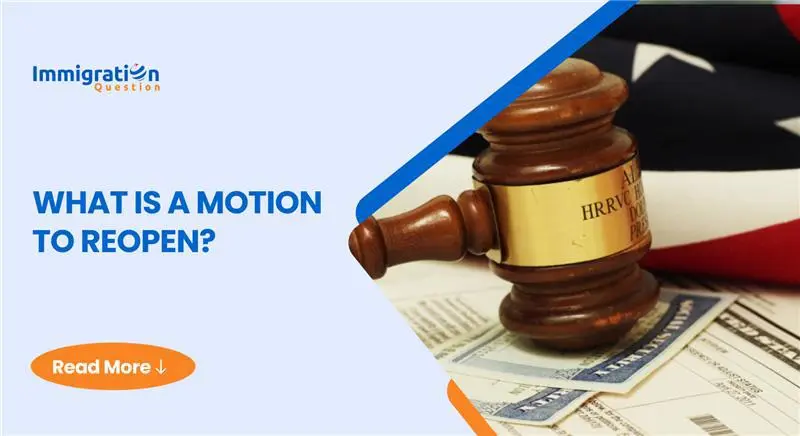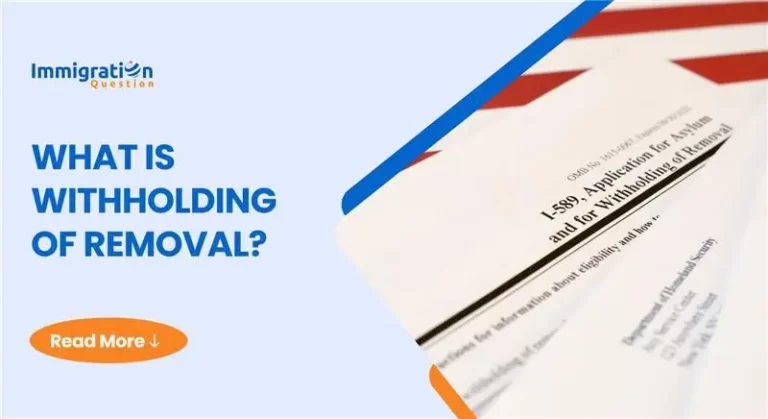If your immigration case didn’t go how you wished, there is still hope that you can stay in the U.S. through a lawful petition called a motion to reopen. This vehicle can help you introduce new evidence or facts to the court once your case has been concluded.
In this guide, we will take you through what a motion to reopen is, who can file one, and how immigration attorneys can assist you.
Q: What Is a Motion to Reopen in Immigration Court?
A: A motion to reopen is a formal request that asks an immigration court or the Board of Immigration Appeals (BIA) to reconsider your case. It allows you to present new evidence or facts unavailable before your first hearing.
What this motion does:
- Reopens your case to consider new situations.
- Allows you to present evidence that could change the decision.
- It helps those unable to meet deadlines for valid reasons or who are now eligible for relief.
It is different from an appeal. An appeal challenges a legal mistake in a ruling, while a motion to reopen presents new evidence not heard before.
Q: Who Can File a Motion to Reopen a Deportation Case?
A: Anyone with a final removal (deportation) order can motion to reopen their case. But you must satisfy the following requirements:
- You must do it within 90 days of the final removal order (although there are exceptions).
- You must bring forward new, material evidence previously unavailable.
- You must bring forward supporting documentation, such as affidavits, medical reports, or new law or changed circumstances on your part.
- You must explain why this information wasn’t available before.
There is greater flexibility in certain humanitarian cases. For instance, asylum applicants, domestic violence victims (VAWA), or confident children may have exceptions or more extended periods.
Q: What Is the Purpose of Filing a Motion to Reopen?
A: The purpose is to have the immigration judge or BIA reopen your case based on new evidence or eligibility for relief.
You can file a motion to reopen if:
- You recently became eligible for a green card based on marriage or work.
- Circumstances in your home country have changed, and deportation would be dangerous.
- You are now eligible for asylum, TPS, or other immigration relief.
- You had incompetent counsel.
- You never received notice of your court hearing.
This movement may provide you with another chance to remain in the U.S., particularly if your removal order resulted from conditions that have since changed.
Q: How Much Time Do I Have to File a Motion to Reopen?
A: Typically, you must file within 90 days after the final order. Except in:
- If you file with the Department of Homeland Security (DHS), the time limit may be waived.
- Where changed country conditions exist in asylum or withholding of removal, the 90-day rule does not apply.
- For victims of abuse or trafficking, the time requirement can be waived as well.
It is always better to file early and consult with an experienced immigration lawyer who can go over your timeline and strategy.
Q: What Happens After I File a Motion to Reopen
A: After submission, the court or BIA reviews the motion and evidence. They will either:
- Grant the motion and reopen the case
- Deny the motion if it lacks merit or is time-barred
- Request more evidence or information
You’ll be scheduled for another hearing if the court reopens your case. There, you’ll have a chance to explain your new evidence and apply for relief, such as asylum or adjustment of status.
Q: What’s the Difference Between a Motion to Reopen and a Motion to Reconsider?
A: These terms sound similar but have distinct meanings in the law.
- A motion to reopen presents new facts that weren’t previously known.
- A motion to reconsider argues that the judge made a mistake about the law in your case.
Occasionally, both motions are filed together. That way, the court can consider both new facts and legal reasons.
Q: What Are the Benefits of a Motion to Reopen?
A: Here’s how a successful motion to reopen can help you:
- Stops deportation while the case is being reviewed
- Gives you a second chance to apply for legal status
- Enables you to present new evidence and legal arguments
- Allows your family to stay together while the case is pending
- Enables you to obtain access to relief based on current circumstances or eligibility
It’s one of the most efficient elimination defense tools when utilized correctly.
Q: Can I Remain in the U.S. While My Motion to Reopen Is Pending?
A: Indeed, you can remain in the U.S. in most cases, waiting for a decision. But it depends on when and on what terms the motion is filed.
- Filing before having your removal carried out, ICE may suspend deportation pending the court decision.
- If done after removal, the motion might allow you back in if the motion is successful.
Your attorney can also request to stay removed pending the resolution of the motion.
Q: How Can an Immigration Lawyer Assist with a Motion to Reopen?
A: This motion is hard to do. One miscalculation and it might be denied. Here’s what your attorney can do for you:
- Evaluate whether you’re eligible under immigration law
- Draft a solid motion with supporting documents
- Identify exceptions to the 90-day rule
- Negotiate with DHS for a joint motion (if available)
- Represent you in reopened proceedings
The legal process is complex to navigate on your own—especially under tight deadlines and rules of evidence.
Final Thoughts
If you’ve received a removal order, don’t lose hope. A motion to reopen can give you a second chance at staying in the U.S.—especially if your circumstances have changed or you weren’t given a fair hearing.
To increase your chances of success, work with an experienced immigration lawyer. At Immigration Question, we connect immigrants with experienced legal guidance so they can fight for their future.
Having trouble with a motion to reopen? Visit Immigration Question now to be paired with an attorney who can help.






